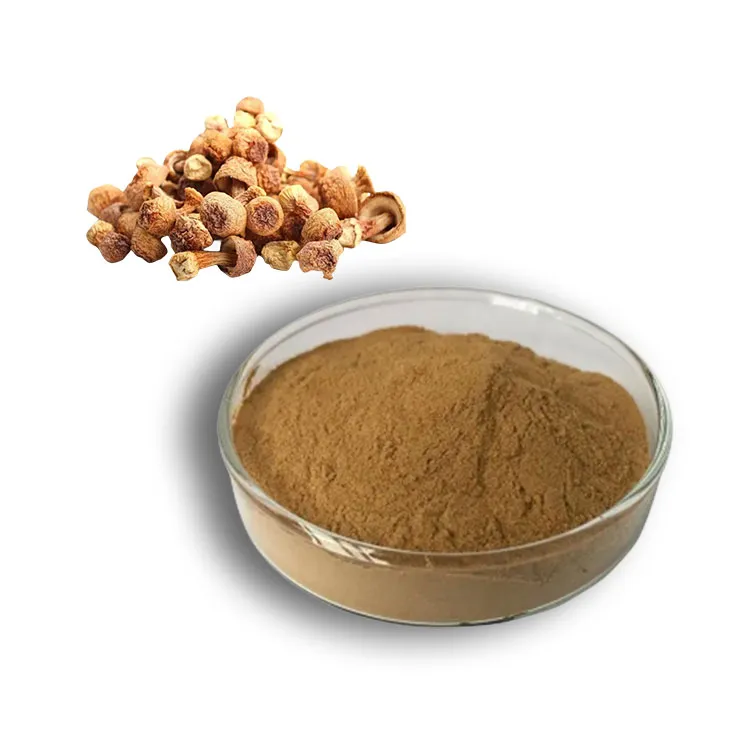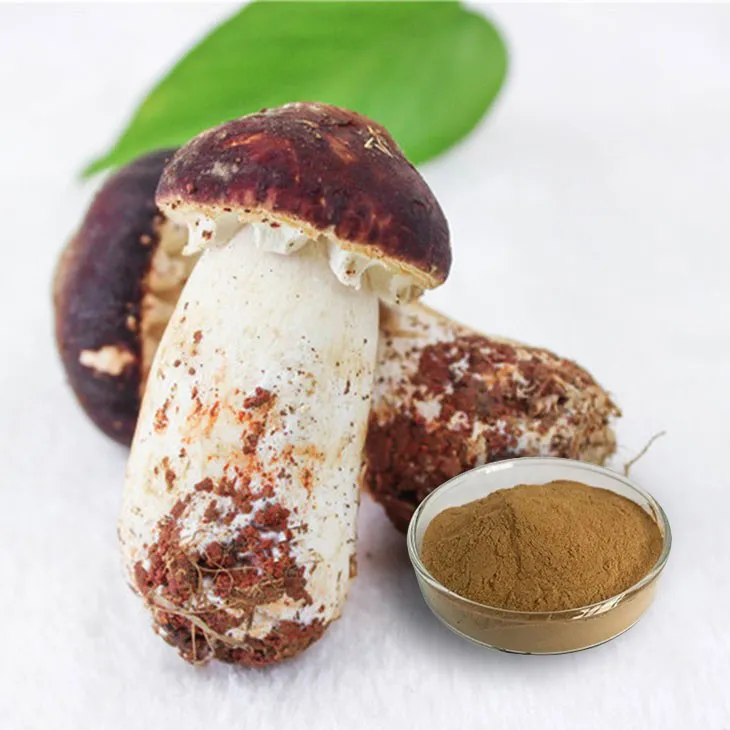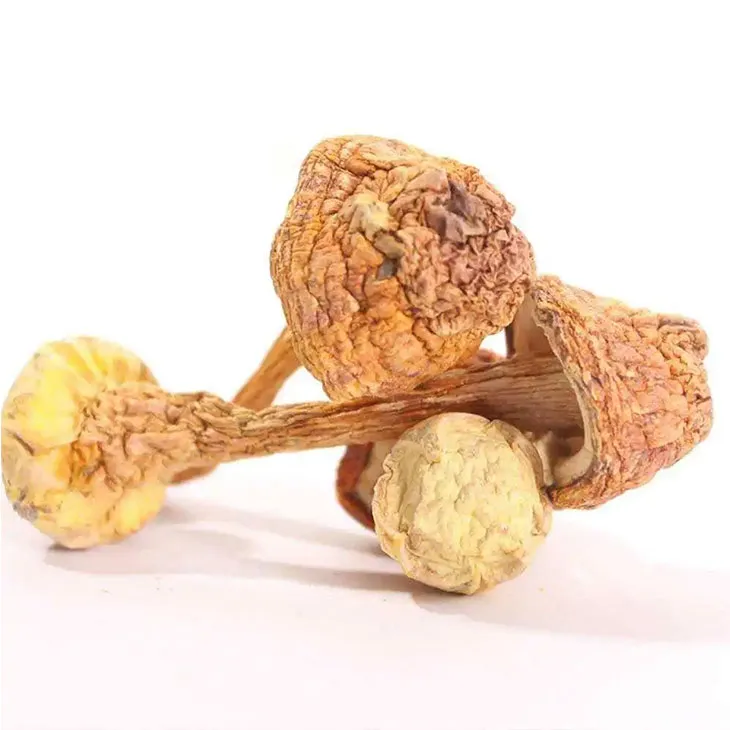- 0086-571-85302990
- sales@greenskybio.com
The process of extracting Agaricus blazei polysaccharide from Agaricus blazei extract.
2024-11-27

1. Introduction
Agaricus blazei Murill, also known as the "King of Mushrooms", is a well - known edible and medicinal mushroom. It contains a variety of bioactive substances, among which Agaricus blazei Murill polysaccharides have attracted extensive attention due to their potential health - promoting and therapeutic effects. These polysaccharides have shown great potential in the fields of medicine, such as anti - tumor, immunomodulatory, and anti - inflammatory activities, as well as in the food industry for functional food development. Therefore, the extraction of high - quality Agaricus blazei Murill polysaccharides from Agaricus blazei Murill extracts is of great significance.

2. Traditional Extraction Methods
2.1 Hot Water Extraction
Hot water extraction is one of the most commonly used traditional methods. The process involves the following steps:
- First, the Agaricus blazei Murill extract is prepared, which may be in the form of dried powder or fresh material that has been pre - processed.
- The material is then soaked in hot water at a certain temperature (usually between 80 - 100°C) for a period of time, which can range from 1 - 3 hours.
- After soaking, the mixture is filtered to separate the liquid phase containing the polysaccharides from the solid residue.
- The filtrate is then concentrated, usually by evaporation, to reduce the volume and increase the concentration of the polysaccharides.
2.2 Acid - Base Extraction
Acid - base extraction is another traditional approach.
- For acid extraction, dilute acids such as hydrochloric acid or acetic acid are used. The Agaricus blazei Murill extract is treated with the acid solution at a specific pH (usually around 2 - 5) for a certain period, which can be several hours.
- After acid treatment, the solution is neutralized with a base, such as sodium hydroxide, to bring the pH back to a neutral range.
- Similar to hot water extraction, the mixture is then filtered and the filtrate is concentrated to obtain the polysaccharide - rich fraction.

3. Modern Extraction Methods
3.1 Enzyme - Assisted Extraction
Enzyme - assisted extraction has emerged as an effective modern method.
- First, appropriate enzymes are selected according to the structure of Agaricus blazei Murill polysaccharides. Commonly used enzymes include cellulases, proteases, etc.
- The Agaricus blazei Murill extract is mixed with the enzyme solution at a suitable temperature and pH. The temperature and pH conditions are optimized based on the characteristics of the enzyme used, usually in the range of 40 - 60°C and pH 4 - 7 respectively.
- The enzymatic reaction is allowed to proceed for a certain period, which may be 1 - 2 hours. During this time, the enzymes break down the cell walls and other components of the Agaricus blazei Murill extract, facilitating the release of polysaccharides.
- After the enzymatic reaction, the mixture is heated to inactivate the enzymes, and then filtered and concentrated as in the traditional methods.
3.2 Ultrasonic - Assisted Extraction
Ultrasonic - assisted extraction utilizes ultrasonic waves to enhance the extraction process.
- The Agaricus blazei Murill extract is placed in an ultrasonic bath or treated with an ultrasonic probe. The ultrasonic frequency and power are adjusted according to the experimental requirements, usually with frequencies in the range of 20 - 100 kHz and power levels of 100 - 500 W.
- The ultrasonic treatment time is typically set between 15 - 60 minutes. During this time, the ultrasonic waves cause cavitation effects, which can break the cell walls of the Agaricus blazei Murill extract and promote the diffusion of polysaccharides into the extraction solvent.
- After ultrasonic treatment, the mixture is filtered and concentrated as before.
3.3 Microwave - Assisted Extraction
Microwave - assisted extraction is also a modern extraction technique.
- The Agaricus blazei Murill extract is placed in a microwave - transparent container and exposed to microwave radiation. The microwave power and irradiation time are carefully controlled. For example, the microwave power can be set between 300 - 800 W, and the irradiation time can range from 5 - 30 minutes.
- During microwave irradiation, the heat generated rapidly within the sample, which can disrupt the cell structure of the Agaricus blazei Murill extract and accelerate the extraction of polysaccharides.
- Subsequently, the mixture is filtered and concentrated to obtain the polysaccharide - containing extract.

4. Purification Steps of Agaricus blazei Murill Polysaccharides
After the extraction process, the obtained polysaccharide - rich extract still contains various impurities, so purification steps are necessary.
4.1 Precipitation
Precipitation is a common purification method.
- One of the most widely used precipitation agents is ethanol. The polysaccharide - rich extract is slowly added to a large amount of ethanol (usually with a final concentration of 70 - 80% ethanol). As the ethanol concentration increases, the polysaccharides will gradually precipitate out of the solution.
- The precipitated polysaccharides are then collected by centrifugation or filtration, and washed with ethanol and water to remove any remaining impurities.
4.2 Dialysis
Dialysis is used to remove small - molecule impurities.
- The precipitated polysaccharides are dissolved in a suitable buffer solution and then placed in a dialysis bag. The dialysis bag has a specific molecular weight cut - off, which allows small - molecule impurities such as salts and sugars to diffuse out of the bag while retaining the polysaccharides inside.
- The dialysis process is carried out for a certain period, usually 12 - 24 hours, with regular changes of the external buffer solution to ensure the effective removal of impurities.
4.3 Chromatography
Chromatography is a more precise purification method.
- There are different types of chromatography techniques that can be used for Agaricus blazei Murill polysaccharide purification, such as gel filtration chromatography and ion - exchange chromatography.
- In gel filtration chromatography, the polysaccharides are separated based on their molecular size. The polysaccharide sample is loaded onto a column filled with a gel matrix, and different - sized polysaccharides will elute at different times.
- In ion - exchange chromatography, the separation is based on the charge properties of the polysaccharides. By adjusting the pH and ionic strength of the mobile phase, different charged polysaccharides can be separated.
5. Optimization of the Extraction Process
To obtain high - quality Agaricus blazei Murill polysaccharides, the extraction process needs to be optimized.
5.1 Parameter Optimization
- For each extraction method, parameters such as temperature, time, solvent concentration, and enzyme dosage (in the case of enzyme - assisted extraction) need to be optimized. For example, in hot water extraction, by conducting a series of experiments with different temperatures and extraction times, the optimal combination can be determined to maximize the extraction yield while minimizing the degradation of polysaccharides.
- Similarly, in modern extraction methods like ultrasonic - assisted extraction, the optimal ultrasonic frequency, power, and treatment time need to be found through experimental design and analysis.
5.2 Raw Material Preparation
- The quality and pretreatment of the Agaricus blazei Murill raw material also play an important role in the extraction process. The raw material should be of high quality, free from contamination and decay.
- Proper pretreatment methods, such as drying, grinding, and sieving, can improve the extraction efficiency. For example, a fine - ground Agaricus blazei Murill powder can provide a larger surface area for extraction, thus increasing the contact between the raw material and the extraction solvent.
5.3 Combined Extraction Methods
- Combining different extraction methods can often achieve better results. For example, enzyme - assisted extraction can be combined with ultrasonic - assisted extraction. The enzymes can first break down the cell walls, and then the ultrasonic waves can further promote the release of polysaccharides, resulting in a higher extraction yield and better quality of the polysaccharides.
- Another example is the combination of microwave - assisted extraction and precipitation purification. The rapid extraction by microwave - assisted extraction can be followed by efficient purification using precipitation, which can save time and improve the overall efficiency of obtaining high - quality polysaccharides.
6. Applications of Agaricus blazei Murill Polysaccharides in Medicine and Food Industries
6.1 Medicine
- In the medical field, Agaricus blazei Murill polysaccharides have shown potential in anti - tumor therapy. They can enhance the immune system's ability to recognize and destroy cancer cells, either alone or in combination with other anti - cancer drugs.
- These polysaccharides also have immunomodulatory effects, which can regulate the balance of the immune system, for example, by enhancing the function of immune cells such as macrophages and lymphocytes.
- Furthermore, Agaricus blazei Murill polysaccharides may have anti - inflammatory properties, which can be used to treat inflammatory diseases.
6.2 Food
- In the food industry, Agaricus blazei Murill polysaccharides can be used as a functional ingredient in the development of functional foods. For example, they can be added to health - promoting beverages or dietary supplements.
- They can also improve the texture and stability of food products. For instance, in some dairy products, Agaricus blazei Murill polysaccharides can act as a thickening agent or stabilizer.
7. Conclusion
The extraction of Agaricus blazei Murill polysaccharides from Agaricus blazei Murill extracts is a complex but important process. Traditional and modern extraction methods each have their own advantages and limitations. Through the purification steps and optimization of the extraction process, high - quality Agaricus blazei Murill polysaccharides can be obtained. These polysaccharides have wide - ranging applications in medicine and food industries, which further emphasizes the significance of efficient and high - quality extraction methods. Future research may focus on further improving the extraction efficiency, exploring new purification techniques, and expanding the applications of Agaricus blazei Murill polysaccharides in other fields.
FAQ:
What are the traditional extraction methods for Agaricus blazei Murill polysaccharides?
Traditional extraction methods for Agaricus blazei Murill polysaccharides mainly include hot water extraction. In hot water extraction, Agaricus blazei Murill extract is soaked in hot water at a certain temperature for a period of time. This allows the polysaccharides to dissolve in the water due to the increase in solubility with temperature. Another traditional method could be ethanol precipitation after initial extraction, which helps in separating the polysaccharides from other components in the extract based on their different solubilities in ethanol.
What are the modern extraction techniques?
Modern extraction techniques for Agaricus blazei Murill polysaccharides include ultrasonic - assisted extraction and microwave - assisted extraction. Ultrasonic - assisted extraction utilizes ultrasonic waves to create cavitation effects in the extraction solvent. This helps in breaking the cell walls of Agaricus blazei Murill more effectively, thus increasing the release of polysaccharides. Microwave - assisted extraction, on the other hand, uses microwaves to heat the extraction system rapidly and evenly. The rapid heating can disrupt the cell structure and improve the extraction efficiency of polysaccharides.
What are the purification steps for Agaricus blazei Murill polysaccharides?
After extraction, the purification steps of Agaricus blazei Murill polysaccharides usually involve removing impurities such as proteins and pigments. For protein removal, methods like Sevag method or trichloroacetic acid (TCA) precipitation can be used. The Sevag method involves mixing the extract with a chloroform - n - butanol mixture to form a two - phase system, where proteins are removed to the interface. TCA precipitation works by adding TCA to the extract to precipitate proteins. To remove pigments, techniques such as activated carbon adsorption can be employed, which adsorbs pigments on the surface of activated carbon, leaving a relatively pure polysaccharide solution.
How can the extraction process be optimized?
The extraction process of Agaricus blazei Murill polysaccharides can be optimized in several ways. Firstly, the selection of appropriate extraction parameters is crucial. For example, in hot water extraction, optimizing the extraction temperature, time, and the ratio of material to solvent can significantly improve the extraction yield. In modern extraction methods like ultrasonic - assisted extraction, adjusting the ultrasonic power, frequency, and extraction time can also enhance the extraction efficiency. Secondly, pre - treatment of Agaricus blazei Murill before extraction can be considered. For instance, drying methods and particle size reduction can affect the accessibility of polysaccharides during extraction. Additionally, using a combination of different extraction methods may also lead to better results, such as combining ultrasonic - assisted extraction with hot water extraction.
What are the applications of Agaricus blazei Murill polysaccharides in the medicine and food industries?
In the medicine industry, Agaricus blazei Murill polysaccharides have been studied for their potential immunomodulatory effects. They may enhance the immune system by activating immune cells such as macrophages and lymphocytes. Some research also suggests that they may have anti - tumor properties, although more in - depth studies are needed. In the food industry, Agaricus blazei Murill polysaccharides can be used as a functional ingredient. They can act as a thickener or stabilizer due to their rheological properties. Moreover, they can also add nutritional value to food products as they are a source of bioactive compounds.
Related literature
- Optimization of Agaricus blazei Murill Polysaccharide Extraction and Its Biological Activities"
- "Agaricus blazei Murill Polysaccharides: Extraction, Purification and Their Potential Applications in Health"
- "Modern Extraction and Purification Technologies for Agaricus blazei Murill Polysaccharides in Food and Pharmaceutical Industries"
- ▶ Hesperidin
- ▶ citrus bioflavonoids
- ▶ plant extract
- ▶ lycopene
- ▶ Diosmin
- ▶ Grape seed extract
- ▶ Sea buckthorn Juice Powder
- ▶ Beetroot powder
- ▶ Hops Extract
- ▶ Artichoke Extract
- ▶ Reishi mushroom extract
- ▶ Astaxanthin
- ▶ Green Tea Extract
- ▶ Curcumin Extract
- ▶ Horse Chestnut Extract
- ▶ Other Problems
- ▶ Boswellia Serrata Extract
- ▶ Resveratrol Extract
- ▶ Marigold Extract
- ▶ Grape Leaf Extract
- ▶ blog3
- ▶ blog4
-
Nature's Bounty Okra Extract.
2024-11-27
-
Chinese Oyster Peptide Powder Factories.
2024-11-27
-
The best organic L - carnitine.
2024-11-27
-
Certified organic acerola cherry extract.
2024-11-27
-
Wholesale β - carotene suppliers.
2024-11-27
-
Chinese lemon balm extract factories.
2024-11-27
-
100% Pure Organic Bitter Melon Extract.
2024-11-27
-
Cassia Seed Extract
2024-11-27
-
Hawthorn Extract
2024-11-27
-
Curcuma Longa Extract
2024-11-27
-
Cranberry Extract
2024-11-27
-
Yam Extract
2024-11-27
-
Propolis Extract Powder
2024-11-27
-
Polygonum multiflorum extract
2024-11-27
-
Camu Camu Extract
2024-11-27
-
Ginger Extract
2024-11-27
-
Black Pepper Extract
2024-11-27





















